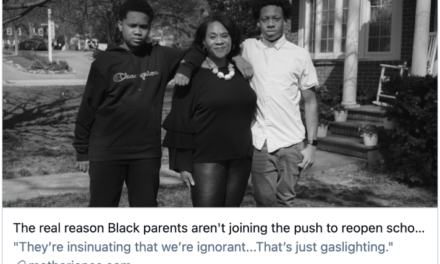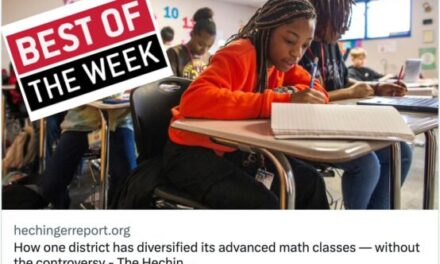Reading coverage remains a key topic for education journalists in 2021. Here’s how some education journalists have covered it.
By Colleen Connolly
A year ago, Chalkbeat Colorado reporter Ann Schimke sent FOIA requests to several districts in the state for what she thought would be an easy lift. She wanted to know what reading curriculum they used, which wasn’t publicly available.
Some districts provided the information right away, but others said they needed time. One said they needed hundreds of dollars to compile the information.
“I was shocked to find out that a lot of district administrators really didn’t know” what curriculum they use, Schimke said by phone.
The resulting story, Why do so many Colorado students struggle to read? Flawed curriculum is part of the problem, found that the state’s 30 largest school districts and charter networks use three dozen core curriculums of varying quality — and some students were getting lost in the shuffle.
“Six in 10 3rd graders can’t read proficiently, even eight years after a landmark reading law,” Schimke wrote. “One reason for this is that many schools rely on methods that aren’t supported by research.”
Literacy is one of the most difficult topics to cover in education journalism. But it’s a critical task that’s not going away after the past year of interrupted learning.
Education reporters at Chalkbeat, the Boston Globe, and EdNC tell me that to do it well, reporters need to dig into district and state policies, have a good handle on the history of reading instruction, know how to pick apart research studies, and understand the science of learning and brain development.
They shared tips on where to start if you’re new to the literacy beat, how to find sources, and how to differentiate your local coverage from the national conversation around literacy.

Above: For Chalkbeat Colorado, Ann Schimke dug into the varied reading curricula used throughout the state to figure out why students were still not learning to read despite state efforts to improve literacy.
During the “Reading Wars” of the 1990s, literacy — in particular, the science of reading — was the subject of heated debate that made it all the rage in education journalism. But interest in the topic waned in the following years.
Many education reporters credit APM’s Emily Hanford with putting literacy back in the spotlight, starting with her hour-long 2018 audio documentary Hard Words: Why aren’t kids being taught to read?
Since then, some reporters have picked up the torch and produced some great stories, including WHYY’s Avi Wolfman-Arent, who reported on a group of Philadelphia-area moms fighting against low literacy in one of Pennsylvania’s wealthiest school districts. Holly Korbey, who wrote about literacy for The Grade last year, has also covered the topic extensively at KQED, focusing particularly on dyslexia.
More than 40 million Americans have low literacy skills and more than 8 million are considered illiterate. Low literacy rates are tied to higher levels of poverty and incarceration, and lower life expectancy.
The consequences of poor reading instruction can also reverberate through generations of families, as KQED’s Vanessa Rancaño reported in her September 2020 story How Families are Pushing Schools to Teach Reading Skills More Effectively. It featured a grandparent determined that her great-grandchildren would not suffer the way that she had, going through the same school system with reading instruction based on the same ideology that failed her.

Above: For KQED, Vanessa Rancaño looked at how reading instruction has evolved over the last several decades, but still left vulnerable kids behind.
Interest in focusing on students learning to read has not gone away during the pandemic.
The Washington Post’s Perry Stein and the Boston Globe’s Sarah Carr have both published notable literacy stories in recent months.
Stein’s This entire second-grade D.C. class fell behind in reading. Now what? looked at one school in Washington, D.C, whose 2nd graders have a year left before they are supposed to be proficient in reading but are a year or more behind where they should be.
“Not a single student started the academic year reading on grade level,” Stein wrote. “It was far worse than a typical summer learning drop. Some were reading at an early 1st-grade level, others at a kindergarten level.”
Carr’s For schoolchildren struggling to read, COVID-19 has been a wrecking ball offered perhaps the most vivid depiction of the pandemic’s impact on literacy. She interviewed 15 families with children who are struggling to read, from a variety of socioeconomic backgrounds and public and private schools.
“All of these families desperately needed the education system to work during the pandemic,” she wrote. “Instead, they ran into the harsh truth that literacy is not always treated as the public good it should be.”
The reaction to her story was overwhelming, according to Carr.
“I received more response to that piece than anything I’ve written in recent years,” Carr said in an email. Those who write her are “mostly a mixture of parents sharing their stories, public officials and education leaders calling for stepped-up efforts to help students with special needs make up for learning loss, and teachers and tutors offering to help.”

Above: For the Boston Globe, Sarah Carr looked at how the pandemic worsened already insufficient educational opportunities for kids struggling to read.
Long after the pandemic is over, education reporters will be tasked with following the literacy story. Here are some things they should keep in mind, based on interviews with education reporters who’ve written about the topic.
STUDENTS & PARENTS FRONT AND CENTER
Families have been on the front lines of pushing for equity in reading for a long time, and they are full of information and stories. Often, they are the ones guiding the policy makers.
Chalkbeat’s Schimke and EdNC reporter Rupen Fofaria recommend talking to parent dyslexia groups to find sources and listening to their stories.
The framing of these stories can make all the difference in reporting on literacy. In October 2019, Fofaria wrote what became the most-read story on EdNC’s website, about a man named Jonathan Mooney who didn’t learn to read until he was 12, but went on to graduate from Brown, an Ivy League university.
Part of the key to Mooney’s success was that he stopped looking at himself as a problem and started focusing on his strengths, not his weaknesses. Fofaria uses this message to guide his reporting as well. “Your brain is the way your brain is,” he said. “The teachers aren’t broken. The students aren’t broken. How do we reach teachers and equip them best? How do we reach students and help them grow?”
Schimke and Fofaria both say it’s important not to fall into the trap of blaming teachers for the problem.
“For me, it’s been helpful to look at this as a leadership problem more than ‘teachers are incompetent,’ ” says Schimke, “because I don’t think that’s the case.”

Above: For the Washington Post, Perry Stein followed a class of 2nd graders who all fell behind in reading — just as they’re about to head into a crucial testing year.
LINKING TO POLICY
Chalkbeat’s Schimke recommends starting by looking at local policy — or the lack of it — around literacy and how it plays out in the classroom.
For a recent story, she looked at a new state policy that ruled the district’s reading curriculum for English learners was not based on science and therefore could not be used.
But the district was under a court order to provide equivalent curriculum in both English and Spanish. There were very few curricula that met both these requirements, leaving English learners in a pickle. Even though the state policy was meant to boost literacy, Schimke said, “[it] had really not taken into account this predicament that is unique to Denver.”
Schimke said a lot of states, Colorado included, are trying to improve literacy through policy, rather than relying on individual district approaches, and this will be a key area to report on in the future. As the pandemic laid bare inequities that already existed, there is more visibility now on issues like low literacy and lawmakers are responding.
To get an idea of where your district stands, Hanford recommends starting with this resource from the Education Consumers Foundation, which provides a ton of literacy data about individual schools, districts, and states.
PRESENTING THE RESEARCH
Research on reading is a crucial piece of reporting on literacy, but reporters must be able to distill it. This requires a thorough understanding of the material before you start writing.
“The biggest piece of advice I would give anybody is to learn as much about the research as possible and to find an expert and develop a relationship with them,” Fofaria told The Grade. “Easily 80 percent of what I’ve learned in the research does not make it into my articles, but it informs the types of questions I ask.”
For his December 2020 story Teaching kids to read: A chapter closes at the state level, a chapter begins in one local district, Fofaria shows how to convey the research without overwhelming readers. He links to other stories that dive into research specifics, and then offers readers what he thinks they need to know most: “Balanced literacy remains the predominant instructional approach statewide,” he wrote. “The common result? Third-grade reading scores that persistently disappoint.”
“I try not to inundate readers with the research,” he said. “This is such a rich area and there’s so much to it. You’re not going to be able to fit everything you’re learning into one story. But just start publishing.”
PREVIOUS COVERAGE FROM THE GRADE
How do we get Black kids’ literacy to matter? Have more journalists cover it. (Colette Coleman)
Cracking the code on reading instruction stories (Holly Korbey)
The media blind spot hiding a big problem in American classrooms (Natalie Wexler)
Hard reporting: Why reading went under the radar for so long – and what one reporter is aiming to do about it (featuring Emily Hanford)
ABOUT THE AUTHOR

Colleen Connolly
Colleen Connolly is a freelance journalist who covers New England for The Grade. Her work has also appeared in the Columbia Journalism Review, The Guardian, The New Republic, Smithsonian magazine, and the Chicago Tribune. You can follow her on Twitter @colleenmconn or find out more on her website: https://colleenmaryconnolly.com/.
















